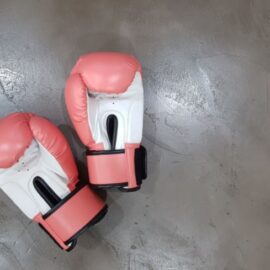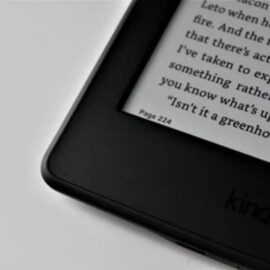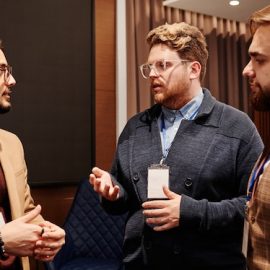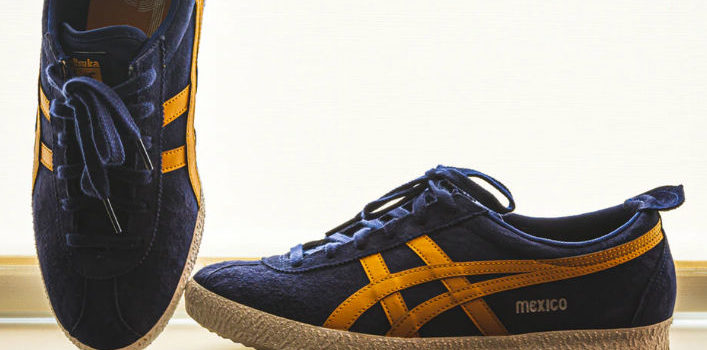
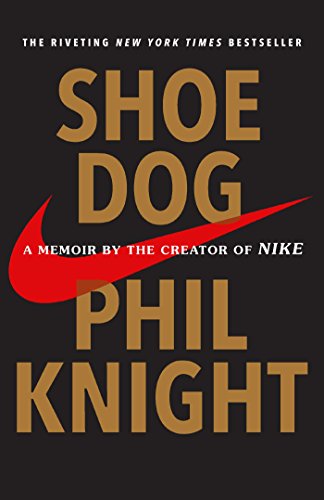
This article is an excerpt from the Shortform summary of "Shoe Dog" by Phil Knight. Shortform has the world's best summaries of books you should be reading.
Like this article? Sign up for a free trial here .
Before Nike, Phil Knight started his shoe career selling imported shoes from the Japanese company Onitsuka, not by manufacturing his own. He sold his first shoes at track meets out of the trunk of his car, and their design and quality become a hit.
Over time, frictions with the Japanese company over distribution rights, slow shipments, and creating new shoe designs forced him to found Nike. If they’d kept their partnership amiable, Phil might have kept working with Onitsuka, and Nike might never have happened.
Learn the history of Nike and Onitsuka’s painful business relationship, from the beginning of Nike.
The Nike Timeline: It Begins in 1962
Phil Knight has graduated from the University of Oregon and earned an MBA from Stanford, and he doesn’t know what to do. He is 24.
His best lead is a final paper he wrote on shoes. Having been a decent runner on the U of Oregon track team, he’s obsessed with shoes. His paper’s thesis: Japanese companies are poised to burst into the shoe market, just as they had for cameras and displacing the German incumbents. This is his Crazy Idea. His way of making a mark on the world.
Phil feels like now is the time to act. He likes a shoe manufacturer Onitsuka and their shoe line Tiger, and he believes this is where he’ll make his start. He makes an appointment to meet executives and travels south to Kobe, Japan.
At the meeting, the Onitsuka staff ask him what company he’s with. He has no company and no name, but he thinks back to his childhood wall, decorated with blue ribbons from track. “Blue Ribbon Sports of Portland, Oregon,” he says. He launches into his presentation of his paper from Stanford business school, describing the size of the market and the vast opportunity there would be for a Japanese shoe manufacturer to enter America. They could undercut Adidas, the dominant brand at the time.
The executives are excited. They’ve been thinking about entering America for a long time, they say. They show him models of Tiger shoes that have promise. Finally, they ask Phil whether Blue Ribbon would be interested in representing Onitsuka in America. Phil accepts. He asks them to send samples to his address in Oregon.
1963
Six months after he first left for Hawaii, Phil Knight returns home to Oregon. He greets his family warmly, but he’s concerned about one thing – have the shoes from Onitsuka arrived?
They haven’t.
He sends a letter to Onitsuka, and they reply promising the shoes will come in a couple of days. In the meantime, he needs a job.
1964
The Onitsuka shoes arrive! Phil thinks they’re beautiful. After all, they are the embodiment of his future. Immediately, he sends two pairs to his old track coach at U of Oregon, Bill Bowerman.
They order 300 shoes, and Phil fills their basement with the shoes. Even better, they come with an announcement: Blue Ribbon Shoes is now the exclusive distributor for Onitsuka in the West.
Phil Knight sells shoes the best way he knew how – going to track meets and showing the shoes to runners, coaches, and fans. His pitch: Japanese manufacturing makes high-quality shoes for extremely low prices. Word spreads fast – sales are so good, strangers show up at their house to buy Onitsukas. Just a few months later, they sell out of their shoes and order a bigger shipment of 300 shoes.
But suddenly, turmoil strikes in the form of a letter. A high school wrestling coach on the East coast claims that he’s met with Onitsuka’s senior management and has been made exclusive American distributor – Blue Ribbon was infringing on his rights. Perplexed, Phil writes to Onitsuka. No response.
After months of waiting, and with no shoes to sell, Phil makes a last-ditch trip to Japan to resolve the dispute, one way or another. He flies to Japan and books a meeting. He’s tremulous, knowing that his future could be decided here.
In a preliminary first meeting, Phil launches into an impassioned plea saying the 13 West states are his, his company’s growth is strong, and that Onitsuka is honor-bound to continue their agreement. His Japnaese counterparty stoically says he’ll be in touch as he leaves.
The next day, he’s scheduled for a meeting with the founder of the company, Mr. Onitsuka himself. The founder says he sees himself in the young Phil Knight. After a pause, Mr. Onistuka grants sales of track shoes in the Western states to Phil, while the wrestling coach can sell his wrestling shoes nationwide.
1965
Onitsuka is painfully unresponsive with Phil Knight and Blue Ribbon. Their shoe shipments often arrive late, which gives Blue Ribbon less time to sell shoes, which then makes each loan repayment period tougher.
Fearing the worst from all these problems, Phil decides to hedge his bets by returning to accounting at Price Waterhouse. He doesn’t love the work, but it pays the bills.
1966
One of Johnson’s customers says that he can start getting Tiger running shoes from another seller – a wrestling coach somewhere in the East Coast. That same wrestling coach from 1964 who was supposed to stick to wrestling shoes.
This simply can’t do. The wrestling coach is stepping on Blue Ribbon’s turf, capitalizing on all the hard work they’ve done building brand recognition for Onitsuka.
Phil flies to Japan immediately to meet with Onitsuka. (Financially, this is no small feat – he doesn’t have the money, so he puts the charge on his credit card.) He has a new contact – a slick looking man named Kitami. They settle into a large conference room with other executives.
Phil lays out his case. They’d been doubling their sales each year and projecting $84,000 in sales in 1967. He’d like to become Onitsuka’s exclusive US distributor for track and field. Kitami rebuffs him. They want someone bigger, more established, with nationwide offices. Phil counters that not only do they have a new retail shop in Los Angeles, they have offices on both coasts.
(Phil Knight was lying – they didn’t have an East Coast office.)
After some deliberation, Onitsuka delivers good news – Blue Ribbon will be the exclusive distributor of Tiger track and field shoes in the United States. Onitsuka would send shoes immediately to Blue Ribbon’s East Coast office. Take that, wrestling coach.
1970
The contract with Onitsuka to supply Blue Ribbon with shoes is ending soon. Phil Knight flies to Japan and asks for a 5 year contract with Onitsuka – after all, most of the US success was due to Blue Ribbon, and a survey shows 70% of American runners own Tigers. But Onitsuka is adamant to keep the deal for only 3 years. Why are they so adamant about cutting the timeline short? Phil is suspicious.
Onitsuka keeps hampering Blue Ribbon with late shipments and the wrong shoes in each shipment. The Cortez is selling like crazy, but instead of shipping those, Onitsuka ships Bostons, in the wrong sizes. Onitsuka promises they’re working on improving factories and reliability, but it never really improves.
Phil decides that Onitsuka can’t really be that incompetent – instead what they’re doing is satisfying the Japanese customers first with a limited supply, then exporting what remains to the US.
As always, the bank has problems with Blue Ribbon’s perennially low cash reserves. Bigger sales has meant bigger loans, which would be harder to pay off and higher risk if the company collapsed. As always, Phil is frustrated that the banks don’t see the bigger picture – a company doubling every year!
With $600,000 in sales this year, Phil asks for a $1.2 million loan. This sounds crazy to the bank. Stretched to the limit, they give him an unsavory ultimatum – his credit line is now maxed. Blue Ribbon can have no more money until they put more cash in their account. They’re also now imposing sales quotas – miss one deadline and they’ll break the relationship.
So money’s now a problem. First, they need $20k for a shipment from Onitsuka. They don’t have it. Blue Ribbon tries a public offering, hoping to get some interest from investors by selling 30% at 300k. Almost no one bites – they raise just $300.
He eventually scrapes together the $20k from receivables, but they need more cash to operate. He has to do what he vowed never to do – ask everyone he knows for money: former teammates, family, friends. Woodell’s family comes to the rescue. They’re not well off, but they give him their entire life savings – $8,000.
Phil reads about Japanese trading companies that are rising in international prominence and seem to do just about everything – import, export, and extend easy credit to all kinds of companies. He goes to the Bank of Tokyo branch in Portland and asks for help. They direct him to Nissho Iwai, Japan’s 6th largest trading company with $100 billion in sales. After just a short conversation, Nissho Iwai offers him a deal on the spot.
Before he takes the loan, he wires Onitsuka for permission. He doesn’t hear anything for days, weeks.
All of a sudden he gets a call from a shoe distributor on the East Coast. Onitsuka has approached him about becoming its new US distributor.
Phil freezes. What’s going on? They’d signed a 3 year renewal just a few months earlier. Were they breaking the contract?
He contacts Fujimoto, his spy on the inside. Indeed, Kitami and Onitsuka are considering a break with Blue Ribbon. There isn’t a firm plan yet, but Kitami is scouting candidates.
1971
As betrayed as Phil Knight feels, he believes then that the best course is to keep the peace, to convince Kitami not to abandon Blue Ribbon. Without Onitsuka and their shoes, he wouldn’t know what to do.
Kitami leaves Portland to travel around the US, but doesn’t reveal his intentions. When he returns, he has a new solution – sell Onitsuka 51% of Blue Ribbon. It’s an ultimatum – accept the deal, or Onitsuka will set up new distributors. Phil Knight is shocked, and tries to stall by saying he needs to talk with Bowerman.
In a moment of clarity, Phil realizes a few things:
- Onitsuka and Kitami cannot be trusted.
- Blue Ribbon and Onitsuka are definitely going to sever ties.
- But they need to stay together as long as it takes to develop other supply sources.
- Step 1: scare off other distributors Onitsuka is meeting with by sending threats to sue.
- Step 2: find a replacement for Onitsuka.
———End of Preview———

Like what you just read? Read the rest of the world's best summary of "Shoe Dog" at Shortform . Learn the book's critical concepts in 20 minutes or less .
Here's what you'll find in our full Shoe Dog summary :
- How Phil Knight started Nike when he was just 24 years old
- The lawsuit that almost ended Nike
- The ups and downs of Nike over 20 years of business

